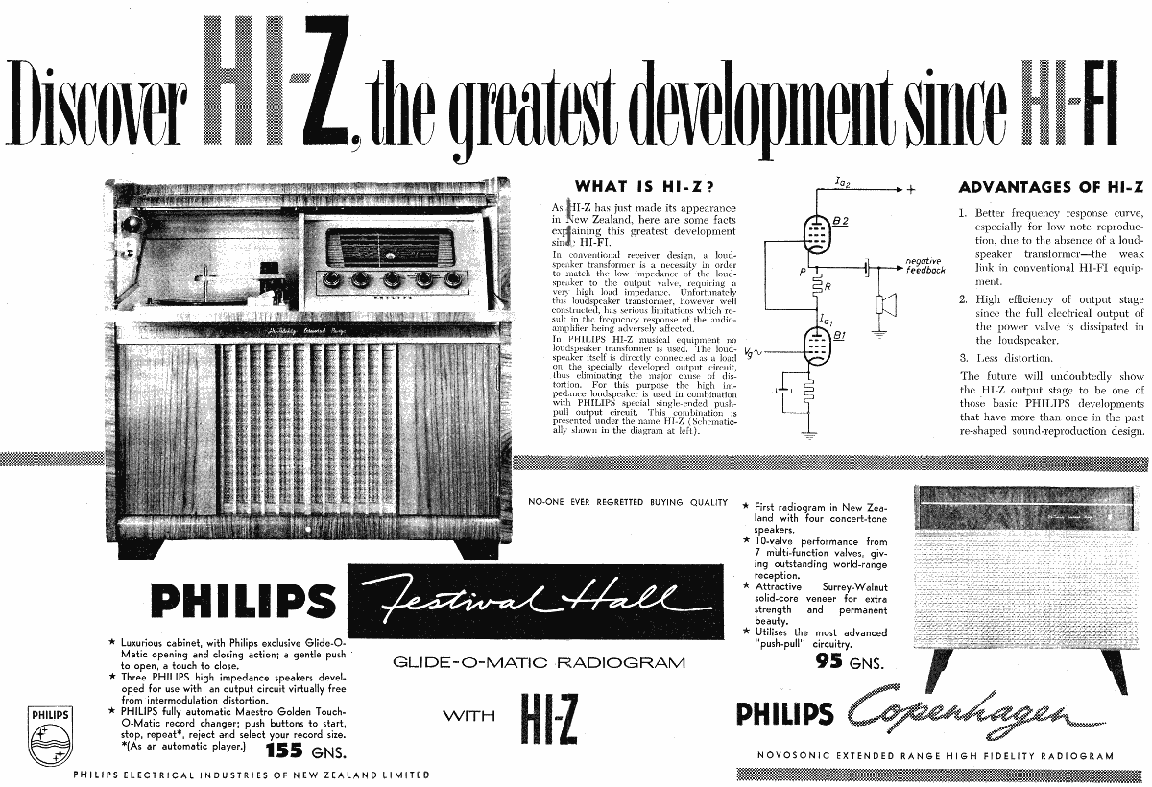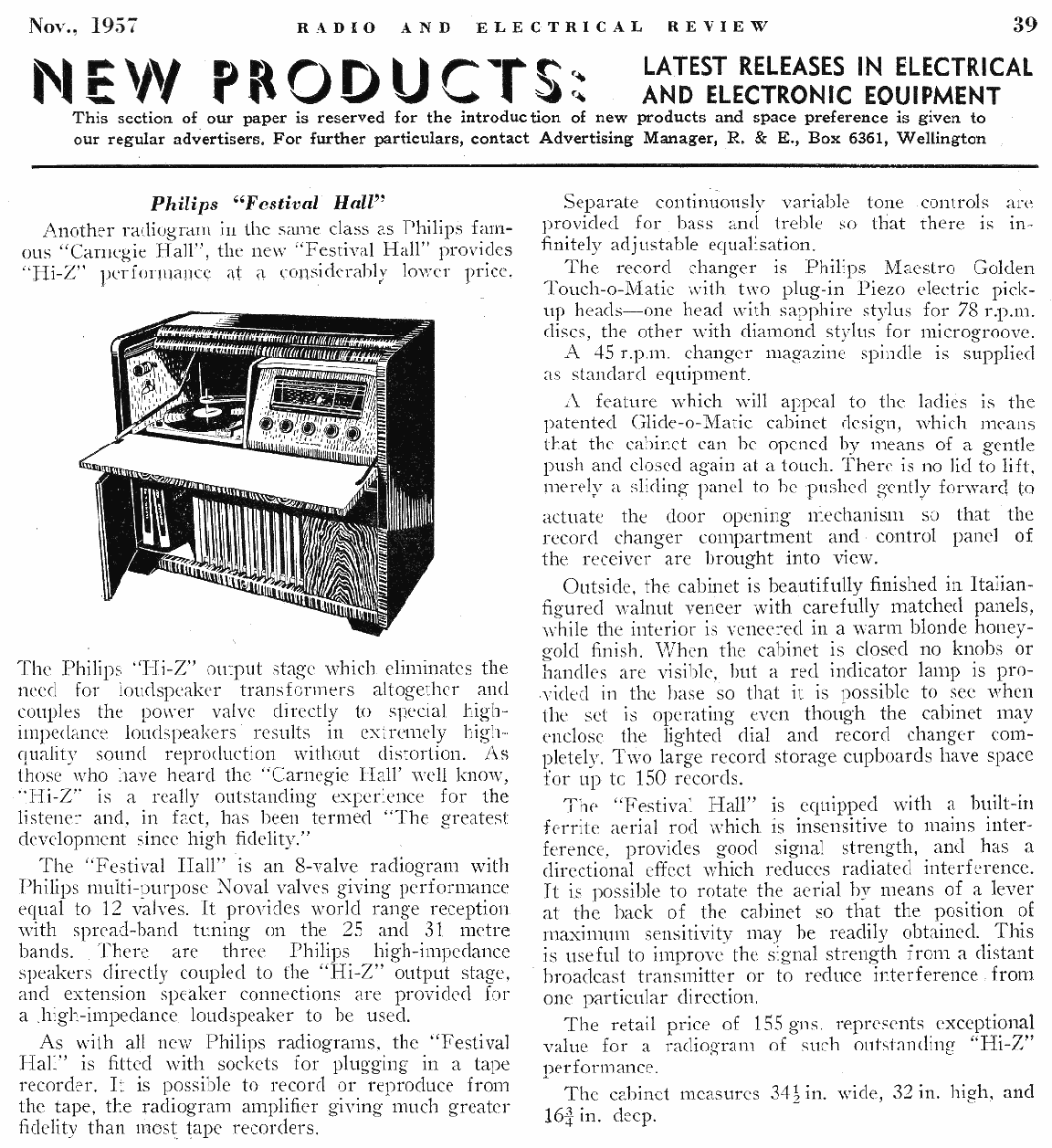7 valve + magic eye radiogram with three speaker extended range audio output, first of a series of Festival Hall radiograms.
Hi-Z Extended Range - no output transformers due to high impedance speakers - take care of the speakers they can be hard to find now.


The Festival Hall series were high-end multi-band radiograms typically using Hi-Z speakers and typically complex (Philips were the Google of their day) circuitry. They were well-built and had great sound. The first few models were mono and valve based, with later sets becoming stereo and also switching to transistors as those became available. There were also valve hybrids with transistor preamp modules in the record input.
Intermediate Frequency: 455kc/s
Frequency Bands: 3
General Construction Notes for Philips Electrical Industries of N.Z. Ltd:
Philips early-mid century were probably the Google of their time - they had branches in many countries and a global brand that everyone knew - and were apparently happy to let engineers come up with new ideas and implement them. Construction is often overly complex but very well engineered - although repairs can also take a complex path. They used time-in-motion studies to find the most cost effective way to asemble sets and sometimes this means repairs can be nightmarish (if you've ever worked on a V7A Theaterette this will be all too aparent). U suffix model numbers are transformerless (hot chassis) sets and great care should be taken, or the sets avoided altogether.
Philips model codes are complex - they are explained in-depth on the Philips brand page.
Mullard codes: The model codes from Mullard sets (unlike their Philips counterparts) appear to contain valve count and date information. For example, the model 525 is a 5-valve 1945 design. The 2 appears to just be an identifier (most likely in case there were two models in 1945 with 5 valves, which there was - the 515 is the small 'Meteor' mantle set).
Fleetwood codes are often just a rearranged version of the Philips code. For example, the FL374T transistor radio is a rearrangement of the Philips model L3Z74T. Early Fleetwood codes were numeric with F on the end. From about 1959 onwards the codes were much more like their Philips counterparts. They start with F or FL (or sometimes FZ for larger consoles)... These later codes also tend to end in a Philips-style identifier for the power source (A for mains, B for battery, T for transistor battery, etc - see the Philips brand page for more info on that).